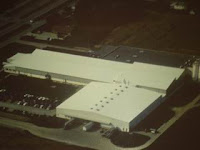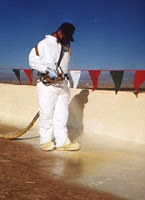Going white and green to save money and energy
One agency that has seen the installation of cool roofs (like those manufactured by Conklin) help it meet its energy sustainability goals is the National Archives.
"The Department of Energy has been pushing white roofs for several years, and we were at a confluence of factors," said Mark Sprouse, the director of the National Archives facilities and property management division. He is responsible for building operations at the National Archives facility in College Park, Md.; the main National Archives building in downtown Washington, D.C.; and the energy conservation projects at all of the presidential libraries across the country.
"Our roofs were getting to be 25-years old, we needed to replace them anyways and it just sort of made sense to do that with a white roof and put the solar on it to meet the greenhouse gas reduction goals that we had set," he said.
Sprouse authored the National Archives' 2011 Strategic Sustainability Performance Plan, which encourages the implementation of the cool roof initiative.
"Our policy is we're mirroring pretty much what Executive Order 13514 says," Sprouse said. "We've tied it all to greenhouse gas reductions. We set a goal two years ago for a 10%, across-the-board greenhouse gas reduction and that's how we're moving forward with our strategic energy conservation policies."
The National Archives' efforts already have proved to be a success, according to Sprouse. "As of last year, we'd already reduced it by 8% and we hope to reach the goal by the end of this year," he said. So far, the Archives has reduced its energy consumption by about $3 million per year. Of that, 3-5 percent is attributable to the green and white roof intitiatives, along with the solar panels placed on the white roof.
The National Archives has installed cool roofs at two facilities — one is the National Archives II in College Park, Md., and the other is The William J. Clinton Presidential Library in Little Rock, Ark. White and green roofs have been installed at both facilities, as well as solar panels to generate to electricity.
"By the time we removed the old roof and put the new roof on and put the solar panels in and tied them into the building electrical system, it took about six months," Sprouse said.
"It saves energy by two ways," Sprouse said. "It reduces the heat load underneath the roof and so we don't have to cool as much. It reflects the sun and the solar panels are producing about 30 kilowatts of power on a bright day, which we feed back into our building electrical system."
In addition, all of the roof drains at College Park empty into a 6,000 gallon tank in the building's central plant, which is used to irrigate the 33-acre compound. "We don't use any city water to irrigate the plants at Archives II," Sprouse said.
The rainwater also helps to keep the green roof green and, in turn, the green roof cuts down on stormwater runoff.
"When it rains, if you stand up on the green roof and watch, it takes almost an hour for water to start flowing off the roof and into the drains because the plants are absorbing all that water," Sprouse said. "That just cuts down on the stormwater that we're sending to the Chesapeake Bay."
Agencies have a number of considerations when choosing to install a cool roof, said Jennifer MacDonald, the director of DoE's Sustainability Performance Office, but studies show that chief among them is the energy the roofs save.
"They think there's about a 15% decrease in annual air conditioning costs that are associated with installing these roofs," MacDonald said, adding that there is no single solution that applies to every building or every department.
Please watch this short video for an overview of Conklin's energy efficient cool roofing systems:
ROOFING CONTRACTORS NEEDED IN MULTIPLE STATES!
Patton Services | (309) 303-3128 | rpatton55@comcast.net | http://www.whiteroofingsystems.com/











